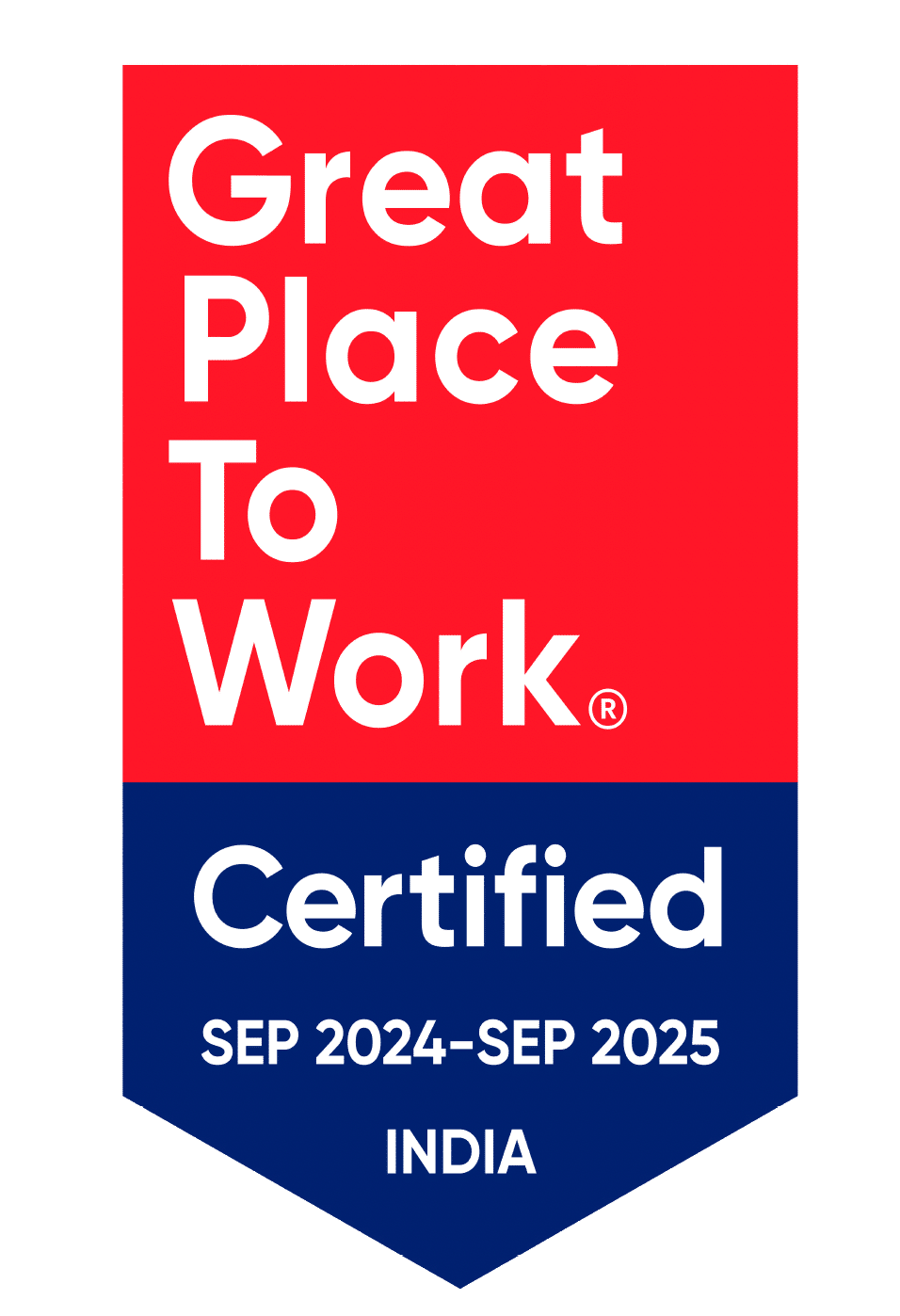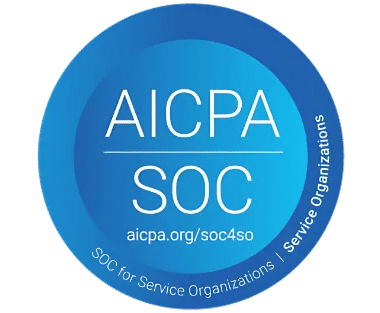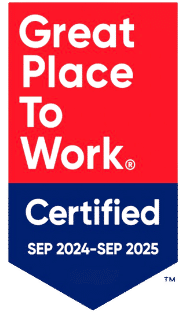5 Key Benefits of an Employee Onboarding Program

Starting a new job is overwhelming. The uncertainty, new faces, and unfamiliar processes can make employees feel disconnected. A structured employee onboarding program helps bridge this gap, ensuring new hires feel welcomed, prepared, and motivated from day one.
What Is an Employee Onboarding Program?
An employee onboarding program is a structured, strategic process designed to integrate new employees into an organization, helping them feel welcomed, informed, and equipped for success. It goes far beyond filling out forms and basic administrative tasks it lays the foundation for long-term employee engagement and productivity.
A well-rounded onboarding program typically includes:
- Pre-boarding activities: Sending welcome kits, company information, and necessary paperwork before the employee’s first day to reduce first-day stress.
- Orientation sessions: Introducing the company’s mission, values, and culture to help new hires feel aligned with the organization’s goals.
- Training modules: Job-specific training on roles, tools, and performance expectations to enable employees to contribute effectively.
- Mentorship programs: Pairing new hires with mentors or onboarding buddies to provide guidance, answer questions, and foster connections.
- Ongoing feedback and check-ins: Regular assessments of employee progress through scheduled feedback sessions, helping managers identify and address any concerns early on.
Why Onboarding Matters More Than Ever
A well-executed employee onboarding program does more than just help new hires adjust it boosts engagement, productivity, and retention, creating a solid foundation for employee success. Research shows that:
- 69% of employees are more likely to stay with a company for three years if they experience a structured onboarding process.
- Companies with comprehensive onboarding programs report a 50% increase in employee productivity.
- Poor onboarding experiences lead to 20% of new hires quitting within the first 45 days.
By providing clear expectations, resources, and support, organizations can empower new hires to hit the ground running and feel confident in their roles. This proactive approach reduces confusion, fosters trust, and drives long-term employee satisfaction.
Boosts Employee Engagement and Satisfaction
Starting a new job can be overwhelming. The uncertainty of new faces, unfamiliar processes, and unclear expectations can make new hires feel anxious and disconnected. This is where a well-structured onboarding program makes a profound difference. It creates an emotional bridge between employees and the organization, making them feel valued, supported, and motivated from day one.
How Onboarding Strengthens Employee Loyalty
An effective onboarding experience makes new employees feel appreciated and empowered, leading to a stronger emotional connection with the company. According to Gallup, 70% of employees who had a positive onboarding experience reported feeling more connected to their organization. This connection significantly increases job satisfaction, engagement, and long-term commitment.
Ways Onboarding Enhances Confidence and Morale
By setting employees up for early success, onboarding reduces the stress of “figuring things out” and boosts morale. Here’s how:
- Clear expectations: A structured program outlines job responsibilities, performance standards, and company values, reducing uncertainty and confusion. When employees know what is expected of them, they feel more secure in their roles.
- Early wins: Well-defined training modules and hands-on practice allow new hires to achieve small victories quickly. This fosters a sense of accomplishment, accelerating their confidence and reinforcing their capabilities.
- Team bonding: Assigning mentors, onboarding buddies, or peer connections helps employees feel less isolated. Building friendships early on strengthens their sense of belonging and enhances workplace satisfaction.
- Recognition and encouragement: Early and frequent positive reinforcement such as acknowledging achievements or celebrating milestones instils confidence and motivates employees to stay engaged.
Real-World Impact of Strong Onboarding
Companies that prioritize structured onboarding see measurable improvements in employee engagement and retention.
- Organizations with formal employee onboarding program experience a 33% increase in employee engagement levels compared to those without.
- Employees who feel connected to their workplace are 87% less likely to quit, demonstrating the power of emotional bonds in reducing turnover.
Additionally, a study by Harvard Business Review found that employees who felt welcomed and supported during onboarding were 58% more likely to remain with the company for at least three years.
Enhances Productivity from Day One
The first few months of a new hire’s journey are critical. Without a clear roadmap, employees may struggle with uncertainty, confusion, and inefficiency, delaying their ability to become fully productive. A comprehensive onboarding program, however, accelerates this process by equipping new hires with the skills, tools, and confidence they need to excel.
How Onboarding Improves Productivity Quickly
Effective onboarding shortens the time it takes for employees to become competent and confident in their roles. By providing clear role expectations, targeted training, and access to essential resources, employees can perform their tasks more efficiently and accurately without unnecessary delays or confusion.
Keyways Onboarding Boosts Productivity
- Faster ramp-up time: A structured program provides immediate access to tools, systems, and job-related information, reducing downtime. This enables employees to contribute faster and with greater accuracy.
- Clear role expectations: Setting clear performance goals, responsibilities, and success metrics ensures that employees understand what is expected of them. This clarity eliminates guesswork and allows them to focus on delivering results.
- Task-specific guidance: Employee Onboarding Program often include step-by-step walkthroughs of job functions, ensuring new hires understand workflows and processes from the start. This reduces errors and increases efficiency.
- Proactive problem-solving: By providing access to support channels, such as HR representatives or IT help desks, new employees can resolve issues quickly without prolonged disruptions.
Skill Development and Efficiency Through Onboarding
Comprehensive onboarding doesn’t just introduce employees to their roles it actively develops their skills and boosts proficiency. Here’s how:
- Hands-on training: Immediate access to tools, platforms, and practical simulations helps new hires gain real-world experience quickly, accelerating their learning curve.
- Fewer mistakes: Proper training and guidance reduce common errors and rework, allowing employees to be more accurate and efficient.
- Role-specific learning: Employee Onboarding Program that include tailored training sessions ensure employees gain skills directly relevant to their job functions, making them more effective.
- Knowledge sharing: Structured programs often incorporate knowledge transfer sessions from experienced employees, enabling new hires to learn proven techniques and best practices.
Onboarding’s Impact on Productivity
The productivity gains from structured onboarding are significant:
- According to SHRM, 69% of new hires become productive faster when they undergo a structured onboarding process.
- Companies with robust onboarding programs report a 50% improvement in employee performance within the first six months.
- Research by Aberdeen Group revealed that organizations with effective onboarding programs achieve 62% greater productivity among new employees.
Reduces Turnover and Improves Retention
The first 90 days of employment are make-or-break for new hires. During this period, employees are most vulnerable to quitting, often due to feelings of isolation, confusion, or lack of support. A well-structured onboarding program, however, significantly reduces early turnover by fostering connections, clarifying career paths, and reinforcing a sense of belonging.
How Onboarding Reduces Turnover
Without proper onboarding, employees may feel disconnected, undervalued, or unsure of their role expectations. This uncertainty can lead to disengagement and early exits. Conversely, a thorough employee onboarding program provides clarity, support, and growth opportunities, making employees more likely to stay.
Key Retention-Boosting Strategies Through Onboarding
- Stronger workplace relationships: Effective onboarding programs foster connections with managers, colleagues, and mentors. Feeling part of a team reduces isolation and strengthens employee loyalty.
- Career path transparency: Communicating growth opportunities, career trajectories, and skill development paths during onboarding shows employees they have a future in the organization.
- Ongoing support and feedback: Regular check-ins and feedback sessions help employees feel valued and heard, which increases their commitment to the company.
- Clear expectations: Setting realistic performance goals and role expectations reduces frustration and builds confidence, making new hires feel capable and secure.
- Cultural integration: Introducing employees to the company’s mission, values, and goals during onboarding helps them feel aligned with the organization’s purpose, which promotes long-term commitment.
Mentorship and Support: Key to Retention
Providing mentorship or peer support during onboarding enhances the new hire experience. Here’s how:
- Mentorship connections: Pairing new employees with experienced team members creates a built-in support system. Mentors offer guidance, answer questions, and provide emotional support, which reduces the feeling of being overwhelmed.
- Onboarding buddies: Assigning peer-level buddies promotes social integration, making new hires feel welcomed and supported.
- Manager involvement: When direct managers are actively engaged in the onboarding process, it boosts employee confidence and demonstrates the company’s investment in their success.
Career Growth and Advancement: A Retention Driver
Employees are more likely to stay with an organization when they see clear career growth opportunities. Onboarding programs that incorporate career path discussions and learning opportunities build a sense of progress and purpose.
- Skill development plans: Introducing learning and development (L&D) opportunities during onboarding gives employees a clear roadmap for growth.
- Performance-based milestones: Setting achievable performance goals with tangible rewards or recognition keeps new hires motivated and committed.
- Leadership pathways: Highlighting potential leadership or promotion opportunities during onboarding shows employees they have a future in the company.
Retention Rates with Effective Onboarding
The impact of structured onboarding on retention is undeniable:
- Companies with formal onboarding programs experience 82% higher retention rates compared to those without.
- In contrast, organizations with weak or inconsistent onboarding see 30% of new hires leave within the first year.
- According to SHRM, 69% of employees are more likely to stay with a company for three years or longer if they experience effective onboarding.
- Research by Glassdoor found that companies with strong onboarding programs improve new hire retention by 58%.
Strengthens Company Culture and Values
Onboarding is more than just a logistical process it is a company’s first opportunity to introduce new hires to its mission, values, and purpose. When employees connect with the organization’s culture from the beginning, they are more likely to feel aligned with its vision and goals, fostering stronger engagement and long-term loyalty.
The Power of Culture in Onboarding
Company culture is the heartbeat of an organization. It defines the shared values, behaviours, and principles that shape the workplace environment. Without a cultural foundation, employees may feel disconnected or uncertain about their place in the organization. Onboarding is the perfect opportunity to:
- Instill core values: Introducing mission-driven goals from day one establishes a sense of purpose.
- Promote inclusivity: Fostering a welcoming environment through diversity and inclusion practices enhances belonging.
- Create emotional connections: Sharing company stories, milestones, and values makes new hires feel part of something bigger.
Key Culture-Building Elements Through Onboarding
A structured onboarding program does more than teach policies it immerses new hires in the company’s identity. Here’s how effective onboarding strengthens company culture:
- Company values and goals:
- Introducing core values, mission, and long-term objectives on day one fosters alignment.
- Sharing real-world examples of how the organization lives its values creates authenticity.
- Employees who understand and embrace the company’s mission feel more connected and motivated.
- Inclusion and diversity training:
- Promoting diversity, equity, and inclusion (DEI) during onboarding helps create a more welcoming environment.
- Offering bias awareness training and cultural sensitivity programs encourages respect for different perspectives.
- Highlighting the companies commitment to equal opportunity fosters trust and promotes belonging.
- Cultural immersion activities:
- Interactive sessions such as storytelling, virtual office tours, or team-building exercises help employees engage with the company’s culture.
- Encouraging participation in company traditions or rituals, like welcome lunches or team huddles, creates a sense of inclusion.
- Real-life success stories of employees thriving in the company strengthen emotional connections.
- Collaboration with leadership:
- When senior leaders are involved in onboarding, it reinforces the organization’s culture.
- Hosting leadership Q&A sessions or sharing personal anecdotes about company values makes the culture more relatable.
Creating Emotional Connections Through Storytelling
One of the most effective ways to introduce company culture is through storytelling. During onboarding, companies can share:
- Founding stories: Highlighting the organization’s origin, challenges, and milestones humanizes the company’s values.
- Employee success stories: Showcasing how employees have grown and thrived within the company reinforces career development opportunities.
- Customer impact stories: Sharing how the organization’s work has positively impacted customers or communities connects employees to the broader mission.
Impact on Long-Term Fit and Engagement
When new hires understand and embrace company culture, they are more likely to feel aligned with its purpose. This translates into higher engagement and retention.
- A report by Glassdoor revealed that 77% of employees consider a company’s culture before applying.
- According to Deloitte, 94% of executives and 88% of employees believe a distinct workplace culture is crucial to business success.
- Companies with strong onboarding programs that emphasize cultural alignment see a 33% boost in employee engagement.
- SHRM reported that organizations with clear cultural communication during onboarding experience 30% lower turnover rates in the first year.
Improves Compliance and Reduces Risks
An effective employee onboarding program does more than just introduce company culture it also ensures legal and regulatory compliance. By clearly communicating policies, conducting proper training, and documenting necessary agreements, organizations protect themselves from potential liabilities. Structured onboarding reduces compliance risks, minimizes legal disputes, and ensures that employees understand their responsibilities from day one.
Why Compliance Matters During Onboarding
Employee onboarding program is the perfect opportunity to establish legal and procedural expectations, protecting both the company and its workforce. Without clear compliance training, organizations face:
- Increased legal risks: Inadequate policy communication can lead to accidental violations.
- Higher liability exposure: Improper documentation increases the likelihood of disputes.
- Employee confusion: Unclear policies leave new hires unaware of their rights and obligations.
- Inconsistent enforcement: Without standardized onboarding, policy application can be uneven, leading to fairness issues.
Key Compliance-Building Elements Through Onboarding
A structured employee onboarding program reduces compliance risks by clearly communicating policies and documenting employee acknowledgment. Here’s how organizations can enhance compliance through onboarding:
- Workplace rules and regulations:
- New hires should receive detailed information on company policies, including:
- Attendance and punctuality: Ensures employees understand working hours, time-off policies, and absenteeism rules.
- Code of conduct: Outlines expected behaviour, professionalism standards, and ethical guidelines.
- Health and safety protocols: Covers workplace safety measures, emergency procedures, and incident reporting.
- Consistent communication of these rules helps prevent misunderstandings and disputes.
- New hires should receive detailed information on company policies, including:
- Legal compliance and mandatory training:
- Structured onboarding ensures that employees complete legally required training, such as:
- Anti-harassment and discrimination training: Educates employees on appropriate workplace behaviour and promotes a safe, respectful environment.
- Data security and privacy protocols: Protects sensitive information by training employees on proper handling of data.
- Occupational safety and health regulations: Ensures adherence to workplace safety standards, reducing accidents.
- Regular training updates and refresher courses reinforce compliance and minimize legal risks.
- Structured onboarding ensures that employees complete legally required training, such as:
- Consistent documentation and record-keeping:
- Onboarding involves completing and filing important documents, including:
- Employment contracts: Outlining terms and conditions of employment.
- Tax forms: Ensuring proper reporting and legal compliance.
- Company policy acknowledgments: Confirming that employees have read and understood the organization’s policies.
- Proper documentation reduces the likelihood of disputes, litigation, or claims of miscommunication.
- Onboarding involves completing and filing important documents, including:
- Confidentiality and data protection agreements:
- During onboarding, employees should sign confidentiality agreements to protect sensitive company information.
- Non-disclosure agreements (NDAs) clarify what data employees can and cannot share.
- These measures protect intellectual property and prevent data breaches.
The Role of Technology in Onboarding Compliance
Many organizations use digital onboarding platforms to streamline compliance. These tools:
- Automate form completion and tracking: Ensuring that all necessary forms are properly filled out and stored.
- Standardize policy distribution: Ensuring every employee receives and acknowledges the same set of policies.
- Enable e-signatures: Creating verifiable, time-stamped records that reduce disputes.
- Track compliance training completion: Automating reminders for employees to complete required courses.
Book a Demo: Elevate Your Onboarding Experience
Want to see how a structured employee onboarding program can transform your workforce? Book a demo with Employee Onboarding 365 today. Experience the benefits of improved retention, enhanced productivity, and stronger cultural alignment.
Conclusion
An effective employee onboarding program is a game-changer. It drives engagement, boosts productivity, reduces turnover, and reinforces company culture. By creating a positive and structured experience, organizations can cultivate loyalty, enhance performance, and improve overall business outcomes.
Investing in a robust onboarding program isn’t just a perk it’s a strategic advantage that directly impacts employee satisfaction and long-term success.
Frequently Asked Questions
1. What is the main goal of an employee onboarding program?
The primary goal of an employee onboarding program is to help new hires integrate smoothly into the company by providing the necessary tools, knowledge, and support to succeed. It aims to boost engagement, accelerate productivity, and enhance employee retention.
2. How long should an employee onboarding program last?
Effective onboarding typically lasts between 30 to 90 days, but many organizations extend it to six months or even a year. Longer programs ensure employees receive continuous support, ongoing training, and regular check-ins, which improves their long-term success and retention.
3. How does onboarding reduce employee turnover?
A well-structured onboarding program reduces turnover by fostering stronger connections, clarifying expectations, and providing continuous support. When employees feel welcomed, valued, and confident in their roles, they are more likely to remain with the company.
4. What are the key components of a successful onboarding program?
An effective onboarding program typically includes:
- Pre-boarding activities: Sending welcome kits and paperwork before day one.
- Orientation sessions: Introducing company culture, values, and policies.
- Training modules: Providing role-specific skills and process training.
- Mentorship programs: Pairing new hires with experienced colleagues.
- Ongoing feedback: Regular check-ins to support employee growth and satisfaction.
5. Can technology improve the onboarding process?
Yes, digital onboarding platforms streamline the process by automating paperwork, providing self-service training, and tracking progress. Technology also enables personalized learning paths, e-signatures, and real-time feedback, making the experience smoother and more engaging.










_svxLrd-8yH.png)

_2VYSFUTN5m.png)

_JiluXJRGNl.svg)

_2djTKNocf.png)





_Rapo0hRMBy.png)










